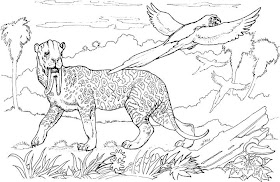In France, the manufacture of paint was controlled by the Academie de St. Luc (the Painters’ Guild of France). In 1764, this guild seized a local factory making Prussian Blue, claiming that the production of the pigment was not authorized by them. Then, the factory owners asked the Paris Academy of Sciences to determine the nature of Prussian Blue. They stressed that they were manufacturing a chemical widely used by various groups such as textile manufactures as well as artists. Was this synthetic pigment a paint or a chemical? The French chemist Jean Hellot (1685 - 1715) determined that Prussian Blue was a product of chemistry and not art. Therefore the painters’ guild had no control over its manufacture. The factory was allowed to reopen, and to continue manufacture this synthetic pigment.
Because of its unique chemistry, Prussian Blue is used by art experts to detect earlier fakes. The first painting to use this pigment is “Entombment of Christ” by Pieter van der Werff (Dutch, 1665-1722) in 1709. (The sky and the Virgin Mary’s veil are Prussian Blue.)Through the use of searching for Prussian Blue in paintings, several fakes were uncovered such as “Entrance to the Cannaregio” purported to be painted by Francesco Guardi (Venice, 1712-1793).
The chemical composition of Prussian Blue is structurally complex. The synthetic pigment is an iron hexacyanoferrate complex compound called iron ferrocyanide. The idealized chemical formula for Prussian Blue is Fe7(CN)18. This pigment is produced by the oxidation of ferrous ferrocyanide. Since the cyanide of the pigment is tightly bound to the iron, Prussian Blue is nontoxic.
Because Prussian Blue is so easily produced, it became the preferred blue of artists. By 1713, this pigment was used by Prussian artists in painting official court portraits. Later, Picasso (Spanish, 1881-1973) used Prussian Blue extensively during his famous “Blue Period”.
Besides painting, Prussian Blue has other uses. The color “Midnight Blue” of crayons is made from this pigment. The blue of blueprints is Prussian Blue. Meanwhile, pathologists use the pigment to detect iron in biopsies. In addition, this pigment is effective therapy for people who have ingested thallium.
A success story of alchemy, Prussian Blue became one of the essentials of the modern world. In the 18th Century, it became indispensable for color work. Later Prussian Blue came to be used in textiles, printing, and other manufacturers. Combining art and science, this pigment symbolizes humanity’s ability to invent beauty out of usefulness. Like the exploration of color, Prussian Blue was at the junction of artistic and useful pursuits.
--------------------------
Works Used:
Bartoll, Jens, “The Early Use of Prussian Blue in Paintings”, paper, International Conference on NDT of Art, Israel, May 2008. http://www.ndt.net/article/art2008/papers/029bartoll.pdf,
Boddy-Evans Marion, “All About Painting”, About.com, http://painting.about.com/,
Copeland, Jessica and Christy Rochelle, “Pigments and Binders: Prussian Blue”, Chemistry and Art, Swanee University, 1998, http://www.sewanee.edu/chem/Chem&Art/Detail_Pages/Pigments/Prussian_Blue,
Douma, Michael, “Pigments through the Ages”, Institute for Dynamic Educational Development, 2008, http://www.webexhibits.org/pigments,
Leland, Nita, “Exploring Color”, North Light Books: Cincinnati, 1998.
Lowengard, Sarah, “The Creation of Color in 18th Century Europe”, Columbia University Press, 2006, http://www.gutenberg-e.org/lowengard/,



